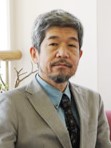The universe began about 13.8 billion years ago in an event called the big bang, when matter was at an extremely high temperature and density. As the universe expanded and cooled, elementary particles formed. Quarks combined to form protons and neutrons, which, in turn, gave birth to nuclei of the light elements such as hydrogen and helium. An unidentified substance called dark matter is several times more massive than all the ordinary substances we know, such as protons and nuclei. Gravity brought the dark matter together, which attracted ordinary matter, to form the stars and galaxies. We will use the post-K computer to conduct precise large-scale calculations to investigate phenomena on scales ranging from that of elementary particles to the universe itself. By combining these precise calculations with experimental and observational data, we will search for keys to understanding the fundamental laws of the universe. We will work to elucidate the mysterious aspects of the universe, such as its birth, the composition of dark matter, and how heavy elements, such as gold, were created.
- Sub-issue A: Quest for the ultimate laws and the birth of the universe
- Sub-issue B: Exploring the origin and evolution of matter
- Sub-issue C: Deciphering the universe with large-scale simulations and astronomical Big Data



